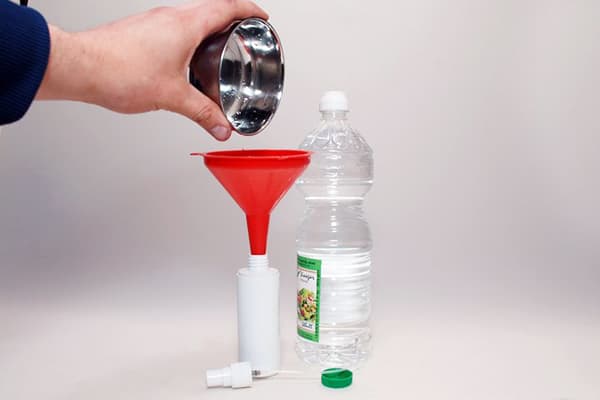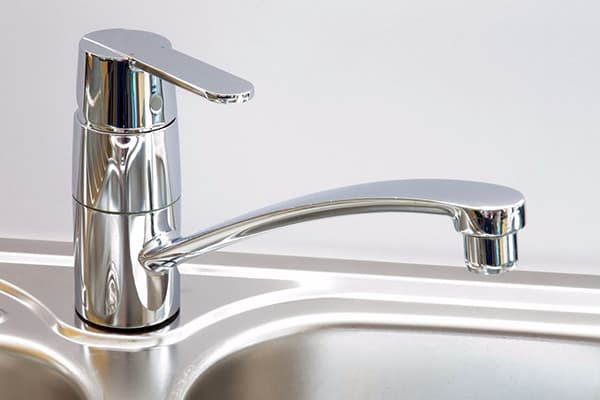Chemistry without chemistry: I’ll tell you how easy it is to remove limescale from the tap
My story is for those who are looking for a way to remove limescale from the tap. And also for those who do not think about it. Not so long ago, the whitish spots on the plumbing did not bother me either, but the everyday incident changed everything.
A wonderful neighbor settled in our house
Remember the line from the song? About a month ago, this also happened in our house. A new neighbor settled with his wife. She helped me a lot. It all started quite normally: Olga came to get acquainted. It turned out that she is a chemistry teacher who has been teaching at a school in our city for 15 years. Pleasant interlocutor, with whom we immediately switched to "you". They chatted a bit while I finished painting my freshly brewed soap cubs (for which I managed to grab a couple of sincere compliments), and then went into the kitchen to drink tea.
Olga accidentally cast a glance at my work area (exactly where I have a sink and a dishwasher, donated by my husband). This is my pride! Chewing gingerbread, waiting for compliments. But the dialogue with us came out completely different:
“Why don’t you follow the tap?” Look, what a raid on it already.
- Yes, somehow ... I feel sorry for the expensive chemistry ...
- And will it be a pity for a new crane when this one goes bad? And he will go bad with this approach, you will wait. And actually you can do without expensive means, I’m telling you as a chemist.
Then Olga said that you can solve the problem with ordinary table vinegar. True, I had to listen to a short, but very informative chemical lecture. I think it will be very useful for you too. Therefore, I retell the words of a chemistry teacher.
Why does vinegar work?
In general, it is necessary to begin the "educational program" with how the plaque forms. Our cranes periodically get water, this is inevitable. But the water itself gradually evaporates, and the substances contained in it settle on the surfaces. Over time, this layer becomes noticeable, and then, if nothing is done, destructive for our cranes:
- if deposits were “at the exit”, the pressure may drop sharply;
- if limescale has occupied the moving parts of a crane, one day it may just break once when trying to open it.
The main culprit of deposits, as we know, is hard water. Rather, the salts contained in it. The higher the hardness index, the more these salts are contained in water and the faster, accordingly, an unfortunate calcareous deposit forms. And the more active struggle against him has to be waged.
But, as Olga explained, the main "saboteur" here is insoluble calcium carbonate (calcium carbonate). In chemical terms, it is a salt of carbonic acid and calcium. Imagine this carbonate is a part of ordinary school crayons, snail shells, and also eggshells!
Our task in the fight against deposits is to break the bonds between them. This can be done with another aggressive acid. Vinegar 9% is just such an acid. During this reaction, carbon evaporates in the form of gas (hence a lot of hissing and bubbles), and calcium is released and becomes easily removed.
Remember the sensational toothpaste advertisement when the chicken egg was dipped in acid, after which the shell dissolved? That's about the same thing will happen on our tap with a touch, if treated with table vinegar!
That is, we can do it ourselves, without additional devices and notable financial expenses, to protect the cranes from destruction. Literally.
Here I appreciated this gift of fate: a chemist in the neighborhood! It is urgent to find out from her exactly how the "killing" of calcium deposits occurs.
Write the algorithm:
- Take a little less than a glass of vinegar (about 150 ml).
- Remember that this is acid, respectively, it can burn our hands. Be sure to wear gloves for protection.
- Pour vinegar into a convenient container and moisten a rag in it.
- Without squeezing the rag, we wrap it with plaque.
- Leave it for about an hour.
- We remove the rag, wash the vinegar and plaque with a sponge, wipe it dry.
Of course, I postponed my soap cubs for later and decided to immediately try out a new way to clean the tap. After all, I have such a scourge in the bathroom too - on the faucet and shower head ... Something at once got sick of so much changing on occasion. And then questions began, to which my new neighbor easily answered:
- Maybe just wipe it with an alcohol? He seems to be from all ...
Not. In alcohols limescale does not dissolve. - Why wrap a rag? Just wiping thoroughly is not enough?
Not enough. If you just moisten the limescale, the moisture from the reacting vinegar and carbonic acid will quickly evaporate - and the reaction will stop. You can wipe the taps for prevention. But if "trouble has come" already, more radical measures are needed. - Why keep the rag so long? Maybe half an hour is enough?
Why rush? It was necessary to hurry when all this only appeared. And now vinegar needs time to dissolve limescale all the way. If the thickness of the coating is minimal, half an hour may be enough. But in any case, it is better to "overtake". Or to repeat the procedure if for the first time hurried.
If you do not want to engage in “vinegar soaking” periodically, simply wipe them dry every time after using the taps. Then nothing will evaporate and nothing will be deposited in the form of limescale.
Is there an alternative?
This was the main question that my new friend heard after the procedure for “updating” the tap in the sink was completed. Because ... If you also try this method, you will understand what I mean: smell. Sharp, pungent and fairly persistent. The smell of vinegar throughout the kitchen ... I turned on the hood and opened the window, but still had to wait a while for this amber to disappear.
And then I was asked to turn on the logic: what other acid is there in the farm, which is odorless? The first thing that came to mind was a lemon. Of course, there is a smell. But it’s pleasant ... True, it was a pity to squeeze a whole lemon almost into the trash ... It is better for tea under Olga gingerbread cookies. What else? Exactly, lemon! I have a lot of citric acid in the bins, I often throw it in pickles.
And then I heard words of approval: she is the most! The strength of its effect depends on the concentration, but there is no smell at all. That is, if in the same volume of water (150 ml) pour a tablespoon of lemon and act according to the above algorithm, the limescale on the tap will be doomed. Although, according to my neighbor, if a raid has just emerged, then even rubbing with a slice of lemon can save: deep penetration of acid into dense layers is not required. And its minimum amount is enough to destroy the calcareous neoplasms in the embryo.
Dissolve citric acid in hot water - it will be faster. And do not try to wipe the limescale with gruel from granules of lemon with water: it will act as an abrasive, and you yourself will damage the outer coating of the tap, which can lead to corrosion.
Since then, a good friendship has been established with my new neighbor. And each time, looking at me for tea, she always praises my taps. They now shine in both the kitchen and the bathroom. After all, after work, I accustomed myself to wipe them with a rag to dryness, to prevent the reappearance of plaque. Because I value my pens, my time and money. And Olga at that time I gave one of my teddy bear and soap - in gratitude for the saving advice. Still useful to study chemistry!
With respect to women's chores and your family finances, Natalya Gorelykh, housewife.


